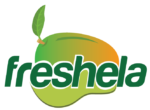
Its no wonder that avocados are one of the world’s most popular superfoods. Although you may find assorted avocados in the market, any of them is an excellent source of an important nutrient called fiber. One avocado packs 13.5g of dietary fiber while one serving or half the fruit has 4.5g of which 2.1g is soluble.
Avocados stand out of all the fruits as they are rich in both soluble and insoluble fiber. Fiber is great for your gut and your overall health as it reduces your risk of heart disease and makes you feel fuller.
Avocado in Ethiopia
The Ethiopian Institute of Agricultural Research (EIAR) says even though there are many local types of avocado in the country, at least six of them are commercially grown in Ethiopia. Many small scale avocado farmers in Ethiopia grow local cultivars that take a longer time to mature and are low yielding. But in recent years, agricultural research centers spread across the avocado growing areas in Ethiopia have been introducing new, improved varieties to farmers. These varieties take a shorter time to mature and produce high yields of better quality.
According to EIAR, the avocado varieties that are commonly grown on Ethiopian soil are:
- Hass
- Fuerte
- Ettinger
- Pinkerton
- Nabal
- Bacon
Here are the differences between the three most popular avocado varieties grown in Ethiopia:
Hass Avocado
- It has a rough, leathery, fairly thick skin that turns purplish-black when fully ripe
- It is round in shape
- The flesh closest to the skin is pale, lime green in color
- The flesh near the seed is yellow in color
- It has a sweet, nutty flavor
- It has a creamy, smooth, oily texture
Fuerte Avocado
- Its green skin remains green even when ripe
- It is pear-like in shape
- It has a smooth, medium-thin skin that peels easily
- The flesh is dense, lime green in color
- It has a creamy, nutty flavor
- It has a slightly oily texture
Ettinger Avocado
- It is pear-like in shape
- It has a smooth, thin, bright green skin that doesn’t peel easily
- The flesh is pale green in color
- It has a mild flavor
- It has lower oil content
- It has a large seed
Hass is currently the most well-known sort of avocado among farmers in Ethiopia. This is because it starts producing earlier and yields larger volumes. The Ethiopian Horticulture Producer Exporters Association (EHPEA) says majority of the avocados that were shipped to foreign markets in 2020 were Hass.
Some avocado exporters want to diversify the varieties they sell abroad so as to extend the supply window of Ethiopian avocados. This is why the Fuerte and Ettinger varieties are mostly grown for cross-pollination alongside the Hass variety. The other kinds of avocado are sold in the domestic market.
Avocado Season in Ethiopia
Avocado harvesting in Ethiopia, which starts in mid-June, is a favorite time of the year for farmers, exporters and consumers. Most of the Ethiopian avocado season is during the months of July, August and September. The season winds down in October. The share of Ethiopian avocados on the international market is climbing steadily.
All the types of avocado in Ethiopia share some similarities such as:
- They can be used to make avocado juice which is popular among Ethiopians. It is a thick, fluffy smoothie that is made up of avocado, sugar, water and sometimes mango or lime juice.
- They are highly nutritious. They are rich in calories, healthy fats, vitamins, minerals and antioxidants.
- Many are hybrids meaning that they are the result of two varieties being bred together to create a new one.

